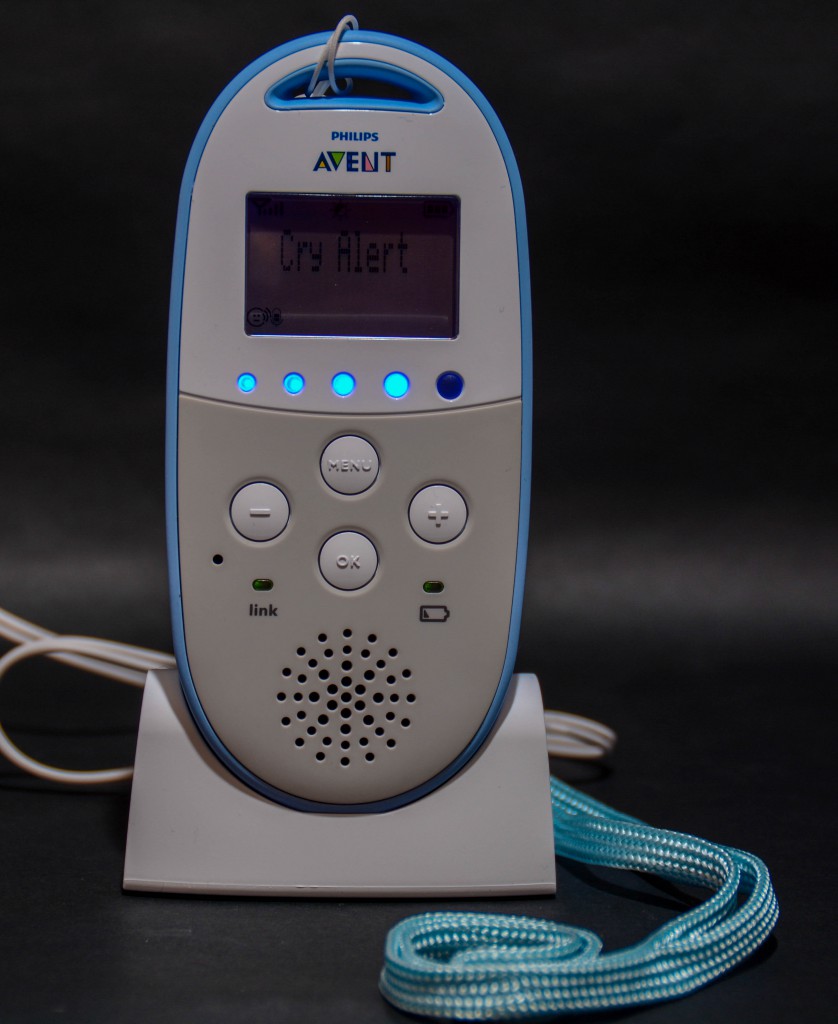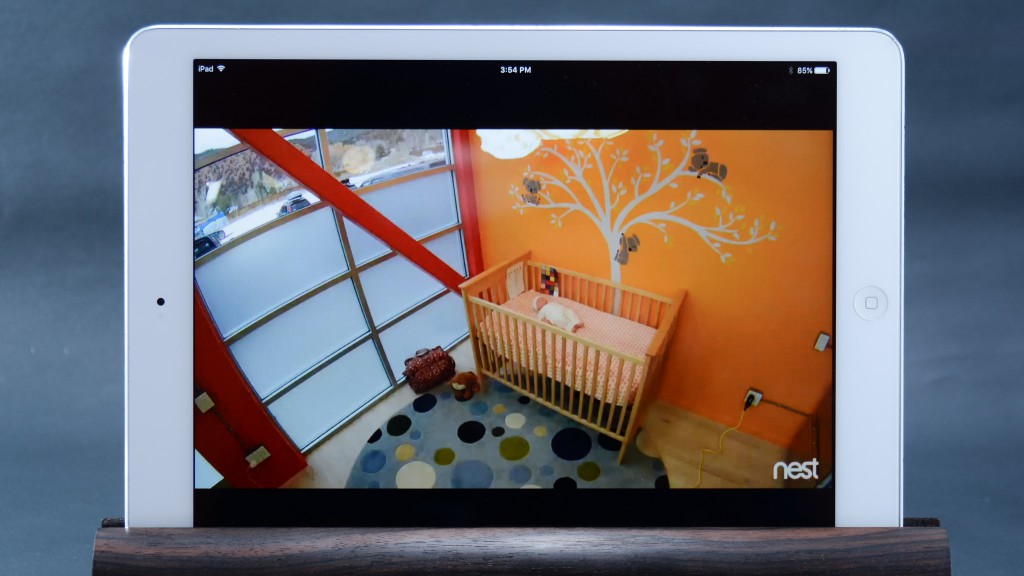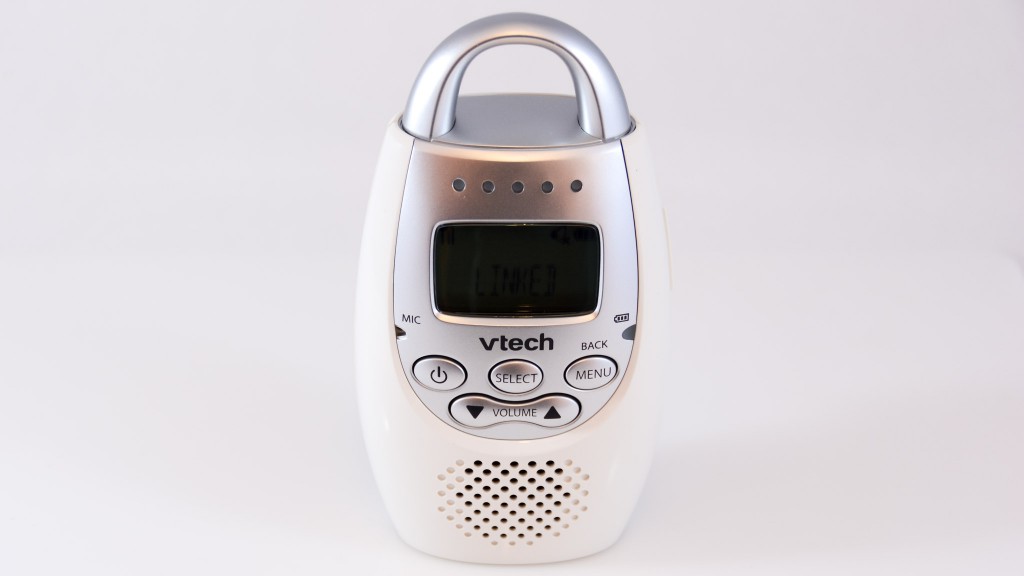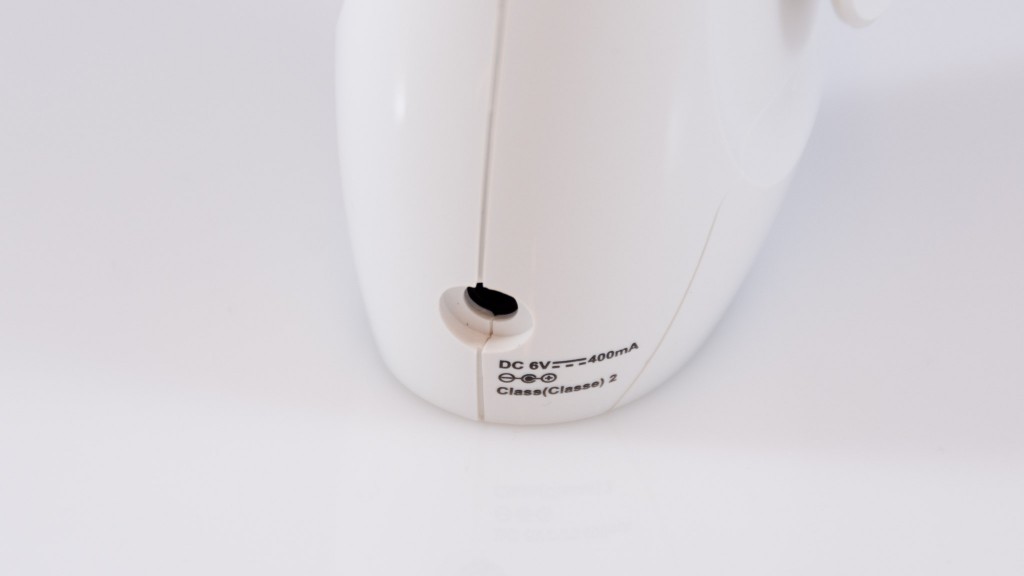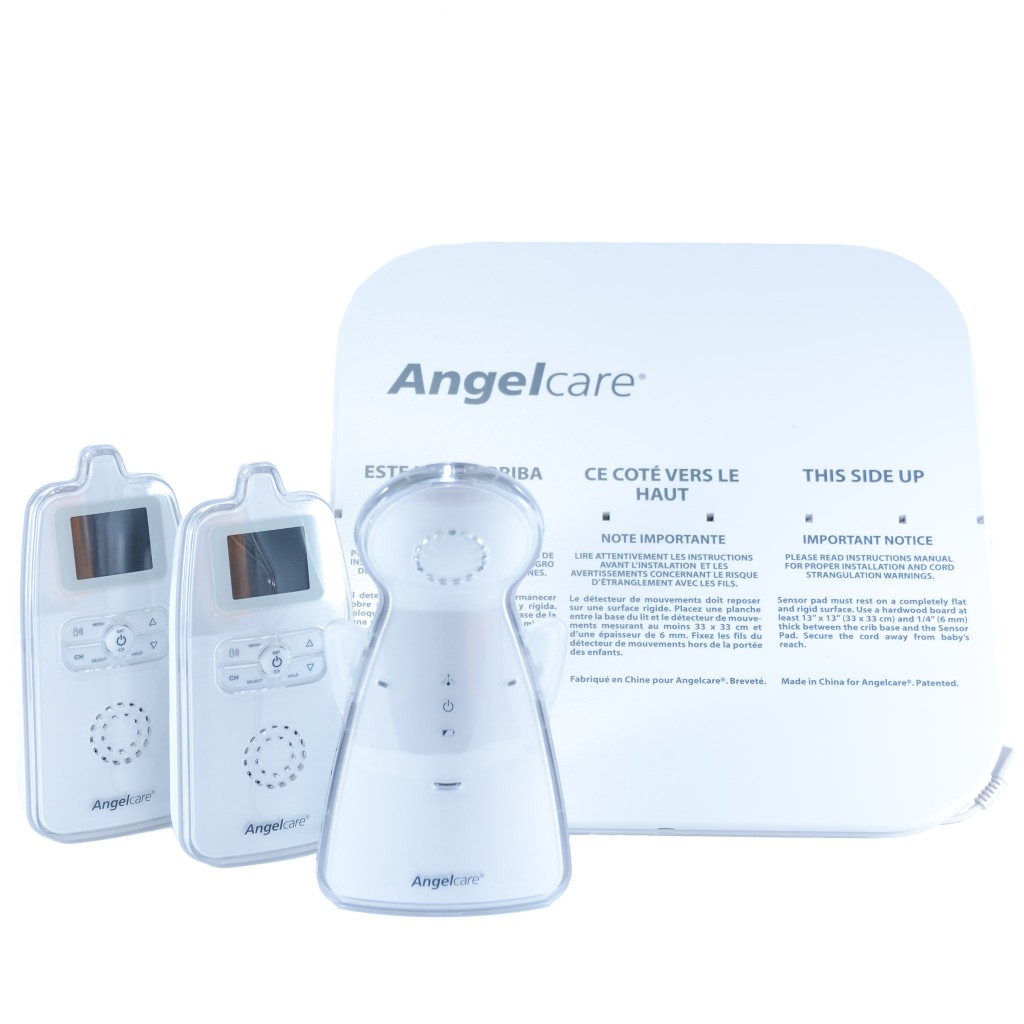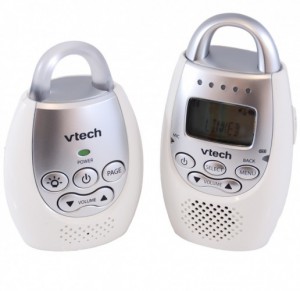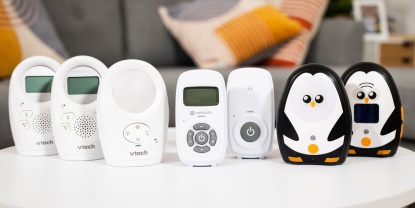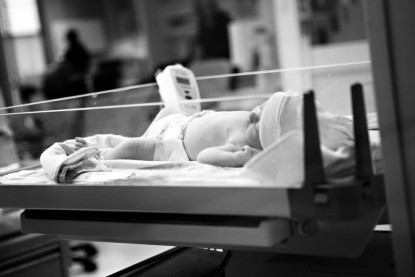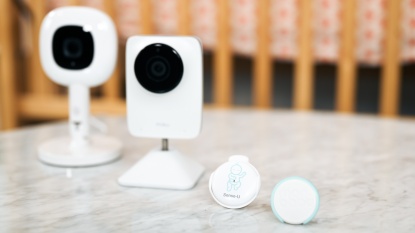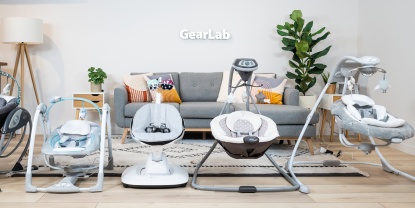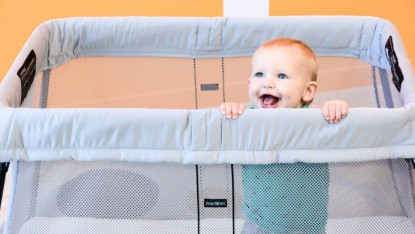We've been using and testing the all top baby sound monitors in our side-by-side best baby monitor review comparison since 2012 to determine which worked well and which failed to pass muster. We also tested dozens of video monitors in our Best Video Baby Monitor Review comparison and movement monitors in our Best Movement Monitor Review. In this article, we'll try to share some of the lessons we learned after using more than 100 baby monitors over the years, with detailed input from multiple parent testers and babies.
In the past, not all parents considered monitors a necessity, but with houses getting larger and lives getting more hectic, it almost feels like a must-have item. When you consider the peace of mind knowing your baby is sleeping soundly and the potential increase in sleep for parents, it is hard not to add a monitor to your list of baby items to buy. With prices being relatively low for sound products, it is possible to find a great monitor, even for parents on a tight budget.
Buying a monitor for your baby can be a complex operation due to a large number of products available. It is especially complicated for the first-time parent since it isn't obvious what to look for in terms of features and pitfalls to avoid. In this article and our corresponding review of baby monitors, we will share what we learned about choosing the right product for your needs. We also suggest you review our Best Video Monitor review for more information on all things monitor and if a video product might suit your needs better. Price is one of the clear differences between all the monitors on the market, with monitors ranging from $30 to $150 list price.
The range is another main consideration when choosing a monitor. Disturbingly, we found no correlation between manufacturers' claims regarding a monitor's range with what we observed in our extensive hands-on testing. You would expect a monitor advertising a 2,000-foot range would work at a longer distance than one advertising an 820-foot range — sadly, this did not turn out to be true in our tests. We advise you to review the manufacturer's range claims with great skepticism and feel the tests we performed on each monitor, which provide an apples-to-apples comparison, are much more useful/reliable than the manufacturer's claims.
In this article, we'll walk you through the different types of monitors and explain what features you should look for and why.
Wondering what we would do in our home or recommend to a friend? Check out the section below and potentially save some time.
Which Type of Baby Monitor? Video? Sound? Movement?
We consider the essential benefit of a baby monitor to be longer and better sleep for parents by gaining confidence that the monitor will wake you if your baby needs attention. We have reviewed three different categories of monitors here at BabyGearLab:
- Sound Monitor Review
- Video Monitor Review
- Movement Monitor Review
While any of the three types of monitors can help you keep tabs on your baby, the key component that parents rely on while sleeping is sound.
Why Sound Monitoring Is the Most Important
In practical use, it is the sound capability of the monitor that you'll mostly rely on. Sound prompts you to wake up and listen for further details. Without sound, any kind of monitor will be virtually useless for sleeping parents. Seeing what the baby is up to or knowing when the baby stops moving as predicted are interesting perks to consider, but the first thing you should think about is sound.
A newborn will typically cry to alert you to their need to nurse or needs a diaper change every 2-3 hours, providing you with a brief window to sleep in between. As your baby gets older, the time period will increase, and by six months, you might enjoy 4-6 hour periods of sleep between cries.
The more confident you are in your monitor's ability to wake you if your baby needs attention, the better you'll sleep. This is especially important for first-time parents who tend to be more anxious and sleep-deprived than veterans. Even if the monitor offers video, it is still the sound that will make or break how well it works (and in our review of the best baby video monitors, we base much of the overall rating score on sound capabilities). Therefore, we recommend that you emphasize sound capabilities in your purchase decision.
How Video Monitors Can Get You More Sleep
Video plays no role in the essential act of alerting you to a baby's crying, so to address this issue, video monitors also include sound. The sound wakes you, and the video gives you more details on what is really happening in the baby's crib.
Video can play a key role in helping you determine whether to make an immediate trip to check on the baby. Sometimes your baby just wakes up briefly and then self-soothes back to sleep. The ability to look in on your baby and see what is going on in the crib can be very helpful in determining that nothing serious is happening. With a sound-only monitor, you need to listen for clues or open the door to the nursery room (which can fully awaken your baby). For this reason, we love the ability of a video monitor.
A video monitor is also useful if you have multiple children and want to keep an eye on two areas simultaneously. When your baby is older, a video monitor can be used to watch kids playing while you do chores in another room. Last but not least, many video monitors can transmit over WiFi, which allows you to view your baby on your iPhone, iPad, Android, or desktop computer. The ability to see your baby from work, or keep an eye on them when they are with a caregiver, is a compelling feature.
For the full scoop on video monitors, take a look at our review of The Best Video Baby Monitors and its companion article How to Choose a Video Monitor for Your Baby.
Why Movement Monitors Are Controversial, Yet Might Save Lives
A new parent can't help but contemplate the worst-case scenarios; what if the baby stops breathing? Some monitors go beyond sound and video and attempt to alert you in the unlikely event that your baby stops moving. Movement monitors monitor consistently for "movement that indicates breathing," and most of them have an alarm that goes off when your little one hasn't moved in 15-20 seconds.
The idea of an alarm that will sound if baby stops breathing is particularly interesting to parents in the first 6-month period where the risk of Sudden Infant Death Syndrome (SIDS) and other sleep-related death causes are most significant.
So, what's the controversy?
There appears to be no scientific study that validates that movement monitors actually reduce the risk of SIDS or sleep-related infant death. These are not medical-grade monitors, and their effectiveness is questionable.
Moreover, both the American Academy of Pediatrics and the National Institute of Health have come out with formal policy statements recommending that parents do not buy products that claim to reduce the risk of SIDS, citing the lack of data to indicate that such products work.
In contrast, there is a published set of techniques advocated by AAP and NIH that have been proven to reduce the risk of SIDS and sleep-related death. It would be a grave mistake to ignore these proven techniques to reduce the risk of SIDS and sleep-related death because you had false confidence in your monitor.
Not much, at least not in their documentation or website.
Angelcare (one of the oldest movement monitor specialists) seems to ignore the obvious question about its product's benefits or effectiveness. In our examination of their product packaging, marketing materials, and the FAQ section of their website, we found no mention of SIDS or sleep-related death. They do not claim their product will alarm if your baby stops breathing. In fact, as far as we can tell, they fail to make any benefit claim regarding their movement monitors other than to claim that the monitor will alarm if no movement is detected and that their monitors offer "peace of mind" to parents. In the end, Angelcare leaves the question of whether its movement detection feature might save a baby's life largely unanswered.
In favor of movement monitors, are a handful of passionate and compelling testimonials in user reviews that describe cases where the movement monitor did alarm in situations where the baby had stopped breathing. In those cases, the alarm allowed the parents to revive their baby, and the monitor appeared to have been instrumental in saving those babies' lives. Critics say that those cases were probably not SIDS as formally defined medically, but rather a case where the baby stopped breathing from asphyxiation or other sleep-related causes. From our point of view, we don't feel the semantics matter. The alarms appeared to work in those cases to save lives, which we think is hard to ignore.
One Parent Unit or Two?
Many parents get by using one monitor, placing the power supply in their bedroom (the main location you'll use your monitor), and taking the parent unit with them to the kitchen and other rooms in the house. This works fine and is only a minor hassle as long as you're monitor's battery life is sufficient. But before the time your baby is a year old, you'll probably find that the battery life on the rechargeable parent unit has degraded to a fraction of its initial longevity. You can solve this by replacing the rechargeable batteries or by simply moving the power supply around with you.
Or, just get a two-parent unit product, and you'll eliminate a lot of that hassle. Some of the units we tested are available with additional parent units. If that feels like something you are interested in, you'll want to double-check that option prior to purchase.
The most convenient way to use a baby monitor is to have a two-parent unit model, so you don't constantly have to move the parent unit from one location to another. Dedicate one parent unit in the master bedroom and plug it into the wall. You generally won't be moving the unit that is in the master bedroom. Place the other parent unit in the kitchen or living area, where you'll be while the baby is sleeping during the day. You will often move this 2nd monitor around as you move from the kitchen to another room to work or watch TV, etc. Place the power supply for the 2nd monitor wherever you'll use it most, and use it on batteries when in the other room(s).
However, some of the sound monitors and the video monitors often do not have a 2nd parent unit available (video monitors often have the option of a second camera, but not typically a 2nd parent unit unless they are WiFi). As a result, you'll be forced to run these monitors on batteries or drag around the power supply when you are out of your master bedroom.
Range, Clarity, and Interference
Range, clarity, and interference are all interrelated. A monitor that offers good range can be brought to its knees by interference from another monitor or electronic device on the same frequency. Similarly, the clarity of sound deteriorates as you increase the distance. That said, there are substantial differences between devices.
Range
Most manufacturers state a "range" for their monitors in their marketing materials and on their packaging. The stated range will be a so-called "open field" range performed where there are no obstructions between the baby unit and the parent unit. These "open field" range specifications are very misleading for several reasons. First, you aren't going to use your monitor in an open field, you'll use it indoors with walls between you and the baby. Who cares if the monitor can allegedly transmit 1,000 feet across an open field? Second, we found no correlation between the stated ranges from manufacturers and what we measured in our own extensive range tests. Third, we found surprisingly little correlation between even our own "open field" range tests and our "indoor" range tests; a monitor that went twice as far as another in open field tests doesn't necessarily offer better performance indoors.
Bottom line: don't trust the manufacturer's range distances. They are flat-out misleading and useless.
Your actual range at home is what matters, and that will be very different than the manufacturer's stated range in any event. Inside your home, where it really counts, the range will be anywhere from 5 to 30 times less than the open field range. In addition, each home is a bit different because your home's walls and wiring will present unique obstructions that interfere with the monitor's ability to receive a clear signal. Further, each monitor is different, and some are much better at getting a clear signal through multiple walls and distances than others.
So, how can you get a grip on the real range you can expect from a monitor?
We concluded that the only way we could find out was to perform our own tests, both indoor and open field. The majority of monitors in our tests worked for an average of 90 feet and five walls, which is probably good enough for most homes.
Since our tests were done consistently (same location, same obstructions) across all the monitors we tested, we recommend you look closely at our test results to compare and contrast monitors to get a feeling for relative range performance. We also advise that you focus primarily on our Indoor Range Test results since the open field range numbers are less predictive of what you'll find in your home (unless your plan is to leave your baby in a field, which we don't recommend).
Clarity
The clarity of a monitor refers to how clear the sound comes through from the baby's room, or in the case of a video monitor, the video image quality and sound quality.
It is not absolutely critical that you hear everything in the baby's room crystal clear; as long as you can hear the baby cry, you've covered the basic functional need. However, it sure is a nice benefit if you actually can hear everything clearly, and given two monitors that are otherwise identical in performance, we'll take the one with better sound clarity every time (or possibly pay a bit more to get it).
The downside of clarity is when a static hiss overwhelms the sound of the baby's room. That kind of background noise can drive you nuts. If the monitor lacks a sound activation feature to turn it off or a mic adjustment to filter it out, it's going to wreak havoc on your ability to sleep, which negates the whole reason of getting a monitor (better sleep). We developed our clarity ratings by testing monitors in the room next door to the baby units, using an iPod sound loop so that all monitors were tested under identical conditions.
Interference
Monitors suffer from two primary types of signal interference. One is the degradation of sound quality as the distance and number of walls are increased. As they increase, the signal gets weaker, and more static/white noise is evident. The other common source of interference from other radio frequency devices such as other baby monitors (perhaps a neighbor's monitor) and/or wireless telephones. Most of the monitors in our review did better with interference than those we tested in previous monitor reviews, indicating that quality and/or technology changes have resulted in improvements to this kind of product across the board.
Save Your Receipt and Return Any Monitor with Interference Issues
Range and sound quality issues are significant enough that we encourage you to buy your monitor only from a retailer that allows you to return the product for exchange or refund if you have a problem.
Our advice is this:
- Buy products from a retailer with a liberal return policy; save your receipt
- Carefully unpack the monitor so it can be returned without difficulty
- Immediately test it in your home to make sure there are no issues that limit or impede performance
- Try it in all the areas you'll use the monitor most (typically your master bedroom, living room, and kitchen areas), and turn on all your wireless phones, WiFi network, and other devices that might interfere
- Keep in mind that interference may also come from a neighbor's home (test it at night when other baby monitors in the neighborhood will be turned on)
- If interference or range is an issue in your home, immediately return the monitor. It's not something you'll be able to fix, and it's not worth the loss of sleep you'll incur suffering through an interference issue. The sooner you return it, the better
Sound Activated Monitoring with Adjustable Sensitivity
We think you'll appreciate a monitor that offers a sound activation feature and/or microphone sensitivity adjustment, and we highly recommend it.
The best monitors can filter out background noise and are tuned to the specific sound frequencies of a baby crying. While the baby is silently sleeping, the best monitors can filter the background noise and hiss that might otherwise occur and become totally silent. Yet, when the baby cries out, the monitor tunes in immediately and even amplifies the sound so you wake up and can check on the baby. Silent until activated can increase your ability to sleep or the longevity of your sleep.
Different monitors describe this feature with different words, but they all refer to the same thing: microphone sensitivity, background noise filter, sound sensitivity, sound-activated, or voice-activation (VOX).
To a first-time parent, this feature may not seem important, but it can play a key role in allowing you to sleep better. Why? Because most parents will want the monitor set to a relatively loud volume to ensure they hear it (and wake up) when the baby cries. With the monitor volume turned up loud, you'll invariably hear a background hiss that sounds like a radio tuned between stations combined with whatever subtle sounds exist in the baby's room. This background noise can be very annoying and prevent you from getting sleep. With the sound-activated feature enabled, that same background hiss is reduced to absolute silence, which can help you fall asleep. Yet when baby cries or a significant noise occurs in the room, the monitor kicks in, and you'll immediately hear everything going on in the room.
A critical feature from our point of view is the ability to easily turn sound activation off from the parent unit so you can briefly hear everything in the baby's room, make sure the monitor is working properly, and get the monitor volume adjusted correctly. Then you can turn the sensitivity filter on to get some sleep.
The higher-end monitors give you adjustable control over the sound activation's sensitivity from the parent unit. This can be very helpful in practice to allow you to adjust so as to barely tune out background noises yet ensure that the slightest sound above the background level comes through on the monitor. However, any sound activation or mic sensitivity adjustment is better than none.
Battery Life - Does it Really Matter?
Battery life is not a major consideration, not really. Almost all the monitors we reviewed offer rechargeable parent units with a battery life of over seven hours, with some running for a significantly longer time period closer to 40 hours. So even if the lowest-cost monitor offered the best battery life, you won't see us recommending them because of it. However, we do think you should think twice about parent units that are not rechargeable.
Battery life comes into play as you temporarily move the monitor away from its normal location (typically the master bedroom). This comes up all the time if you only have one parent unit, as you'll want to have the monitor with you in the kitchen, office, and living room while the baby sleeps. Relocating the power supply every time you move from one room to another is a hassle. However, with most of the products in our review staying charged well over 10 hours, we don't think many parents will struggle with battery life as long as they get the parent unit back to its charging cradle before bedtime.
In general, we found that video monitors offer poor battery life compared to sound or sound/movement monitors, which means you'll be relocating the power supply and the monitor more often. Also, keep in mind that battery life degrades after use. When your baby is a year old, your monitor's battery life will be a fraction of what it was when new. We recommend that you replace the batteries with new rechargeable batteries if the battery life degrades significantly.
Risk of Strangulation
A primary safety consideration with any monitor is making sure the cord(s) are out of the baby's reach. The power cord and any other cords, should be secured well out of the baby's reach. While a newborn initially lacks the mobility to reach through a crib, they will gain the ability and curiosity as they age. We urge you to secure all cords from the get-go since you'll have forgotten about cord placement months later when your baby becomes mobile and can reach the wires.
Choosing the Right Monitor for You
Here are some guidelines on choosing the best monitor for your needs.
First - Range
Without a doubt, the range will be the biggest limiting factor in any of the monitors you might consider, no matter what type you are looking at. Sound monitors, in general, have longer ranges than video. However, it can still be a problem finding one that works in your home depending on the distance between units and the number of obstructions and interference that might be present.
The WiFi video monitors, are game-changers when it comes to range. So long as you have a good strength WiFi signal (or you buy WiFi repeaters to extend the range), a WiFi solution can work at any distance. You can monitor from work as easily as you can from the next room. For the WiFi monitors, you'll need to evaluate range based on whether you have adequate WiFi signal strength from everywhere you expect to place the camera (typically the nursery room) and everywhere you expect to monitor from. You'll also need a reasonably fast internet connection. If you are having trouble watching Netflix, then a WiFi monitor is not for you.
Second - Sound Clarity
We love sound activation and think it is well worth any extra penny to get a monitor that has it as a feature. It can make or break whether or not you ever get to sleep at night, and given that is the whole point of a monitor, we find that monitors that lack it also lack our love. Theoretically, sound activation also solves any interference issues a monitor might have as well.
Last - Features
While we think you should be able to narrow down your selection of which monitor to buy by the range and sound activation alone, there might be features you are looking for that aren't captured in those two metrics. Several of the monitors offer different features you might find interesting. We prefer those with sound activation and sound filtering properties to create a quiet parent unit. Still, there are other features to consider, like lullabies, nightlights, temperature sensors, and one even has a room motion sensor. If you've narrowed your options to two possible contenders, the additional features can help you break the tie.
What Would We Recommend?
BabyGearLab feels most parents should seriously consider creating a hybrid solution by combining a sound monitor with a top-ranked video baby monitor.
Why buy two different monitors? Isn't that a little overkill?
The primary goal of any monitoring device is for parents to get much-needed sleep while their little one sleeps. Parents are alerted to the sound of a baby crying which indicates a need to check on the baby further. Top-ranked sound monitors have advanced noise filtering features and sound activation not found on popular WiFi video options. These kinds of features improve a parent's ability to obtain quality sleep by helping keep the parent's bedroom silent when the baby isn't crying (which is more important than you may think) and by relaying clear and accurate sounds when the baby is upset.
A quality WiFi video monitor steps in once you are alerted by your sound monitor that your baby is crying. Your video monitor allows you to see directly into the nursery, so you can better determine your baby's level of need without leaving your bed. WiFi monitors also let you check in on your baby when you are at work — something we absolutely love about these products.
You certainly could rely on a video product's features and sound, but on the whole, video monitors can't do what sound products can. WiFi monitors transmit sound (staticky white noise) even when the baby sleeps. This "background" noise can severely impact your ability to sleep and could result in you turning the volume down and missing your baby's cries. And, when your baby does cry, the sound quality isn't clear.
If you buy the wallet-friendly Vtech DM221, you'll get the sound-related features you want to get the better sleep you desperately need. Combine one of these choices with the budget-friendly Wyze Cam V3 or Google Nest Cam 2nd Gen, and you'll have a hybrid combo that provides quality sound and impressive visuals giving you everything you need for complete baby monitoring.
The plan of purchasing both a WiFi video monitor and a sound monitor is a win-win with options that can save you money and increase sleep while providing excellent monitoring coverage at home, with a nanny, and away.
Conclusion
All monitors for babies have come a long way. No matter what kind of monitor you are considering, options are available for a myriad of prices and levels of quality. If seeing a video isn't a necessity for you, then you might save a few bucks by going with a sound-only option. If monitoring a baby's movement feels like a necessity, you may consider that as an option before a sound-only monitor, as they provide both sound and movement. But no matter which way you go or what price range you settle on, there is something for everyone in our monitor reviews.



